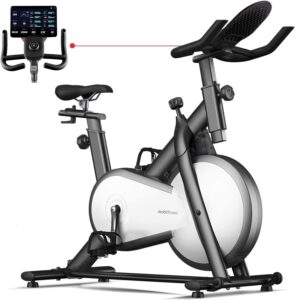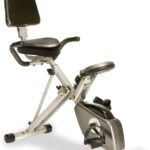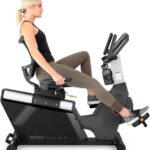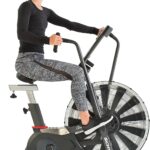Exercise bikes have grown in popularity recently, becoming a standard in gyms and homes. They are popular among fitness enthusiasts due to their ease of use, efficiency for cardiovascular workouts, and small size. However, like with any workout equipment, understanding its specs, particularly the weight limits, is critical. This information ensures your safety during exercises and plays an important role in ensuring the bike’s durability and lifetime.
Understanding Exercise Bike Weight Limits
Exercise bikes are more than machines; they are precision-engineered equipment designed to aid us in our fitness endeavors. However, every bike has a feature many overlook: the weight limit.
The weight limit of an exercise bike refers to the maximum weight that the bike can safely support. It’s a vital factor, not just a number on a page. Riding a bike that isn’t built to handle your weight can result in accidents, rapid wear and tear, and even equipment failure. In other words, neglecting this standard endangers your safety and your bike’s life.
But why do these weight limits exist, and how are they determined? Let’s delve a little deeper.
Every exercise bike is a result of meticulous design and testing. The frame construction is one of the initial factors in its design. This frame bears most of the weight, and its strength is critical to the bike’s overall performance. The material used, whether steel or aluminum, has a considerable impact on the bike’s weight capacity. Steel, for example, is frequently stronger and can withstand more weight, but it is also heavier than aluminum.
Aside from the material, the general stability of the design must be considered. Even if a bike is composed of the toughest steel, it might become unstable if not designed to distribute weight uniformly. This stability is provided by the frame and other bike components, such as the base, pedals, and even the seat.
The weight limit on an exercise bike is essentially a synthesis of several scientific and engineering factors. And it serves as a reminder that every detail, no matter how minor, influences our workout experience.
Average Weight Limits for Different Types of Exercise Bikes
When shopping for an exercise bike, having a general idea of what to expect regarding weight capacity is helpful. Each bike type, with its unique design and purpose, offers different weight limits. Here’s a breakdown:
1. Upright Exercise Bikes:
These bikes are perhaps the most common and closely resemble the structure of regular bicycles. On average, upright bikes can handle weights between 250 to 300 pounds. Due to their design, the weight primarily focuses on the seat and pedals, making constructing these parts essential for determining the bike’s overall weight limit.
2. Recumbent Exercise Bikes:
With a more relaxed seating position, recumbent bikes allow users to lean back and pedal forward. This design often spreads out the user’s weight more evenly, allowing these bikes to sometimes support a bit more weight. They typically range from 250 to 350 pounds, but this can vary based on the model and brand.
3. Indoor Cycling or Spinning Bikes:
Designed primarily for intense cardio workouts and often found in spin classes, these bikes can be quite robust. Their weight limits can sometimes surpass upright and recumbent bikes, ranging from 300 to 350 pounds. Their solid frame and reinforced pedals make them suitable for vigorous sessions.
4. Elliptical Cross Trainers with Seat:
While not exactly an exercise bike, it’s worth mentioning these as they are a popular alternative. Combining the motion of cycling and stepping, they provide a full-body workout. Their weight limits are similar to that of recumbent bikes, often accommodating between 250 to 350 pounds.
Read: Guide to Schwinn IC4 Seat Replacement
Factors Influencing Weight Limits on Exercise Bikes
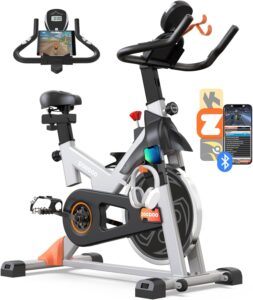
You’re not alone if you’ve ever wondered why exercise bikes have differing weight restrictions. These standards are not arbitrary; they are based on specific considerations. Here are some of the primary criteria that influence how much weight an exercise bike can support:
Materials Used:
The weight capacity of an exercise bike can be substantially influenced by the material used. Steel is a desirable material due to its strength and durability. Steel bikes may generally support more weight than lighter materials, such as aluminum bikes. However, aluminum bikes are typically lighter and more rust-resistant, which may appeal to some users. Some high-end versions may also include titanium or carbon fiber bikes, which combine lightweight qualities with strength.
Bike Design and Structure:
The design of the bike is important in determining its weight limit. For example, upright bikes, which look like traditional bicycles, may have differing weight capacities than reclining bikes, which sit in a more relaxed position. Recumbent bikes have a more even weight distribution due to their design, which allows them to support more weight.
Pedal and Seat Construction:
You might wonder how pedals and seats factor into this. It’s as easy as that: these are the two key points of interaction between the user and the machine. Strong pedals ensure that the force exerted while pedaling is transferred effectively and without causing damage. Similarly, a robust seat not only gives comfort but also contributes to the bike’s overall weight distribution and stability.
Read: Costco Exercise Bike vs Peloton
Risks of Exceeding the Weight Limit
Pushing the boundaries might sound appealing in many scenarios, but it’s a game of caution when it comes to the weight limits on exercise bikes. Overloading these machines beyond their recommended weight capacity poses risks to the equipment and, more importantly, to the user. Here are the primary risks associated with surpassing the weight limit on exercise bikes:
1. Potential Damages to the Bike:
Exceeding the recommended weight can strain the bike’s components. Over time, this added stress can lead to parts like the frame, seat post, or pedals bending, breaking, or wearing out prematurely. Such damage means additional repair costs and can shorten the bike’s lifespan.
2. Safety Hazards for the User:
Safety should always be the top priority. A bike bearing more weight than it’s designed for can become unstable, increasing the chances of accidents. This instability can result in falls, leading to injuries ranging from minor scrapes to more severe conditions like fractures.
3. Impact on Warranty and Service Agreements:
Most manufacturers specify the conditions under which the warranty continues in effect. Overloading the bike may be considered misuse, voiding your purchase warranty or service agreement. If the bike malfunctions or breaks down, the manufacturer may refuse to cover the repair charges, leaving the consumer to shoulder any expenditures.
Conclusion
Exercise bikes are an excellent tool for reaching fitness objectives, but it is critical to recognize their weight limits. These limits, established by criteria such as materials, design, and structure, assure rider safety and the bike’s longevity. Exceeding them may result in equipment damage, safety problems, and warranty issues. Pay attention to these specifications while purchasing your new exercise bike. You’re investing in a long-lasting, safe, and efficient workout buddy by choosing a bike customized to your demands and respecting its weight capacity. Stay safe, and have fun cycling!
